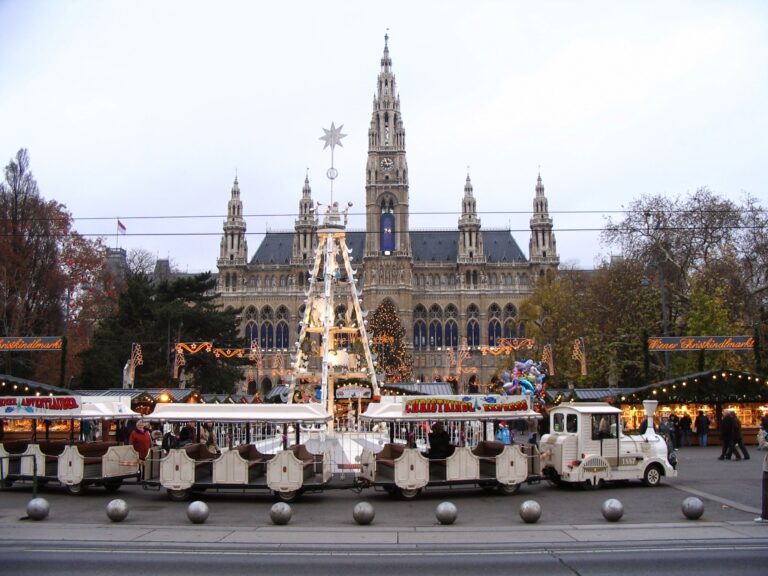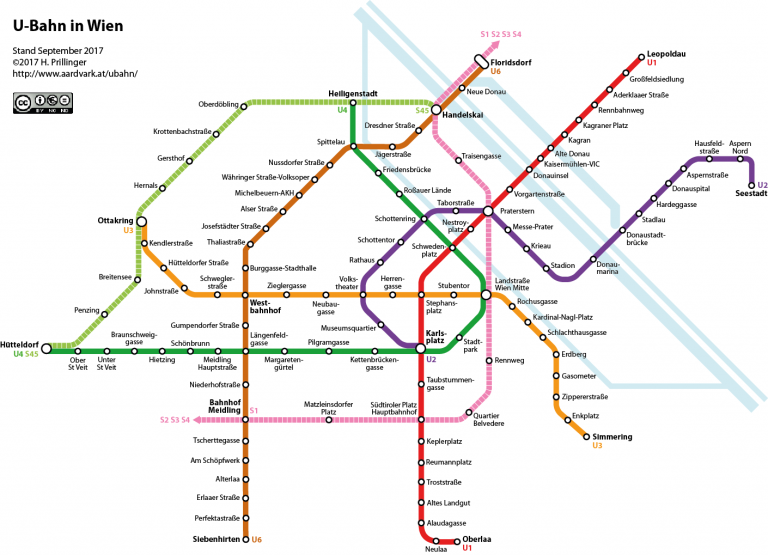Metro Map , Schonbrunn Map
Innere Stadt ( 1st district )
The historic heart of the city exudes elegance at every corner and boasts the best boutiques, the finest hotels, and the grandest architecture. Despite its modern flair, the inner city has maintained an archaic note, a parallel evolution that has developed and maintained the center in its impressive form over the years. A recommended way to see the sights is with Fiaker a horse-drawn carriage accompanied by interesting Viennese chit-chat.
U-BAHN: Stephansplatz ( U1, U3 )
Lepoldstadt ( 2nd district )
Vienna’s 2nd district uses the geographic separation of the Danube as its boundary. Of particular note in this area is the Prater, a vast park area dating back over the centuries as play and hunting grounds for the nobility. The park has maintained its role as a playground and has advanced in the direction of a permanent amusement park in the city.
U-BAHN: Praterstern / Wien Nord ( U1 )
Landstrasse ( 3rd district )
A predominantly working-class area with a high influx of eastern European immigrants, bordered to the northwest by the more outlet city center and to the northeast by the Danube canal. Sights in this area include the Hundertwasserhaus, the Belvedere Palace and Kunsthaus Wien.
U-BAHN: Landstrasse / Wien Mitte ( U3, U4 )
Wieden ( 4th district )
A somewhat more upmarket residential area boasting vibrant and interesting nightlife around bars and quaint restaurants. The culinary highlight of this area is the Naschmarkt, fruit & vegetables, cheese & wine, cafes, and many bistros…
U-BAHN: Sudtiroler Platz ( U1 )
Mariahilf ( 6th district ), Neubau ( 7th district )
A district of artists and students, the wonderful bohemian atmosphere around one of Vienna’s main shopping streets, Mariahilfer Strasse is underlined by a great selection of bars, clubs, and restaurants.
U-BAHN: Neubaugasse ( U3 )
Doebling ( 19th district ), Grinzing, Neustift am Walde
The quiet greenery of the Vienna Woods and the splendor of the country’s homes are evident here. The area is most well known for its “Heurigen” restaurants.
Schnellbahn: Oberdoebling ( S45 )
KLOSTERNEUBURG
The Abbey of Klosterneuburg dates back to 1113 when Margrave Leopold III moved his residence to this site. TgeAugustinian canons were summoned to the Abbey1133 to create a religious center with economic, cultural, scientific, and social functionality. The Abbey has maintained its breathtaking posture surrounded by a beautiful archaic and well-preserved old town.
BADEN
A wellness town of historic character often described as a town of water, wine and culture. The Roemer thermal spa is a spa situated under Europe’s largest self-supporting glass roof, a temple to wipe away the stress. Enjoy Baden’s wines with an elegant meal, and maybe even a visit to the city’s famous Casino.
NEUSIEDLER SEE
As part of the Windsurfing World Cup circuit. The steady winds here act as a cooling side-effect in summer for many Viennese day trappers. Some tend their boats, lie in the sun, or go kite-surfing, ornithologists treasure the secluded marsh areas, but most importantly everyone can find a relaxing spot.
WACHAU ( Melk, St. Poelten, Krems )
A climatic and cultural singularity, Wachau is an area blessed with the finest stable weather allowing the cultivation of some of Austria’s best wines, an advantage long recognized by the monks. The monasteries, towns, and countryside offer breathtaking architecture, relaxation, and many culinary delights.
Graben the “moat” refers to its use in the l2th century, today it stands for shopping
Herrengasse a street name derived from the extravagant houses and palaces lining it
Himmelpfortgasse the dominating attraction is the winter palace of Prince Eugen
Hoher Markt the oldest city square, area dates back to the Roman settlement of Vindobona
Kohlmarkt one of the most elegant streets of Vienna, try the exquisite Demel bakery
Praterstrasse a cosmopolitan boulevard from 1560, home to many bygone celebrities
Singer Strasse most notably associated with the Knights of the “Deutsche Ritterorden”

